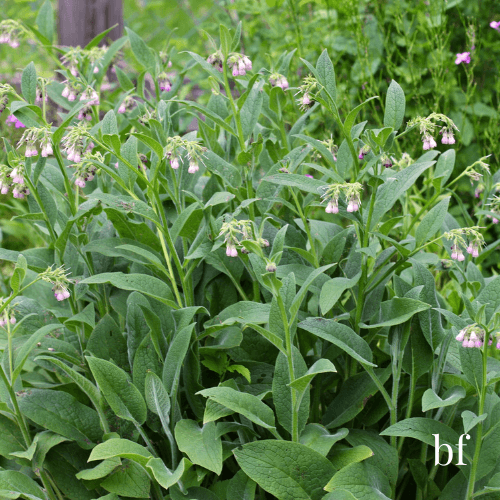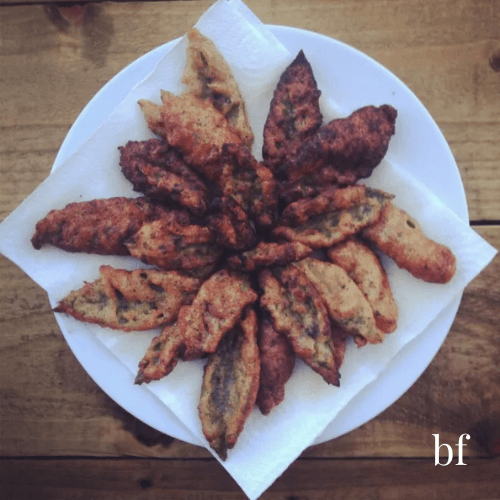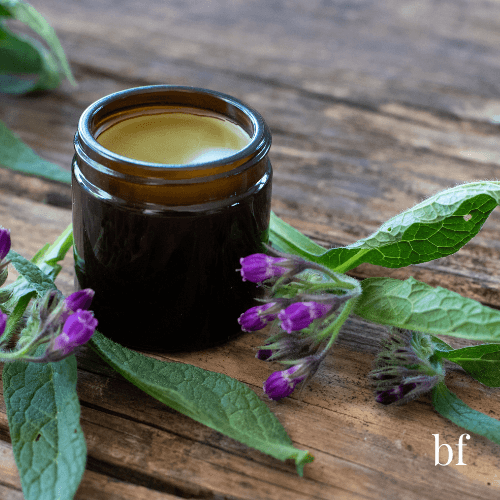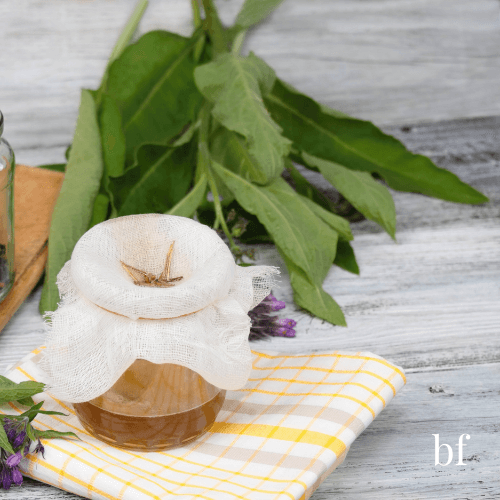Comfrey
‘……given to drinke against the paine of the backe, gtten by violent motion as wrestling or overmuch use of women ………’
John Gerard 1597
I love my comfrey plants. I have three; one in each vegetable garden and one in a flower bed. It wasn’t actually planted there but dropping a piece of root invariably means you have a new plant whether you want it or not. So, before you dig a hole for that tiny little herb you have just bought, make sure that is where you want it to live forever.


In The Garden
Once it settles comfrey grows quickly, giving you stunning large leaves, which are hairy and can itch when touched. The purple flowers grow in a cluster at the top of a stem. They aren’t at the top of the beauty list, but flowers mean the plant is happy!
Although it prefers some shade it will grow in full sun and isn’t fussy about soil types.
The easiest way to propagate comfrey is from a root cutting, but it can also be grown from seed.
As a Fertilizer
Comfrey is a fabulous fertilizer. The easy way is chop up leaves and place them around the base of plants. Making a liquid fertilizer takes a bit more effort but is worth it, especially if you have pot plants. A word of warning – don’t close the bucket with a tight lid. I know from experience that it will explode, and keep it far away from your home, it stinks!


Culinary Uses
While comfrey has a long history of use in food, it does contain pyrrolizidine alkaloids which can be harmful to the liver in large amounts or over long periods.
That said, the young leaves are still eaten in parts of Europe. The leaves can be battered and fried like spinach fritters or added sparingly to soups and stews
Medicinal Uses
Knitbone, knitback, bruisewort and healing herb are some of the well-deserved common names. Fractures, broken bones, bruises, cuts and sores are healed quickly with a poultice or cream. An electrician was doing repairs at my home and he cut his hand quite badly. I packed it with crushed yarrow to stop the bleeding, then cleaned it and wrapped the wound with a poultice of fresh comfrey leaves. He took a pot of healing salve home with him and, two days later, called to tell me how amazed he was that the wound had closed and was healing beautifully.


Comfrey is safe to use externally, and I add it to eczema cream and a general healing salve to close up wounds. Ensure the wound is totally clean as the speedy healing can allow dirt to be trapped and cause infection
Cautions:
Excessive internal usage, especially of the root, can cause liver damage and possibly cancer.
Do not use on dirty wounds as the skin heals quickly and can trap the dirt, causing infection.
Do not use on very deep wounds as the skin heals quickly at the surface and can cause an abscess below.
Restricted herb in Canada, Australia and New Zealand
Become a
HERB WHIZZ
How do you learn about herbs?
By joining the
Barefoot Herb Club
Where you discover one new herb every single week!






